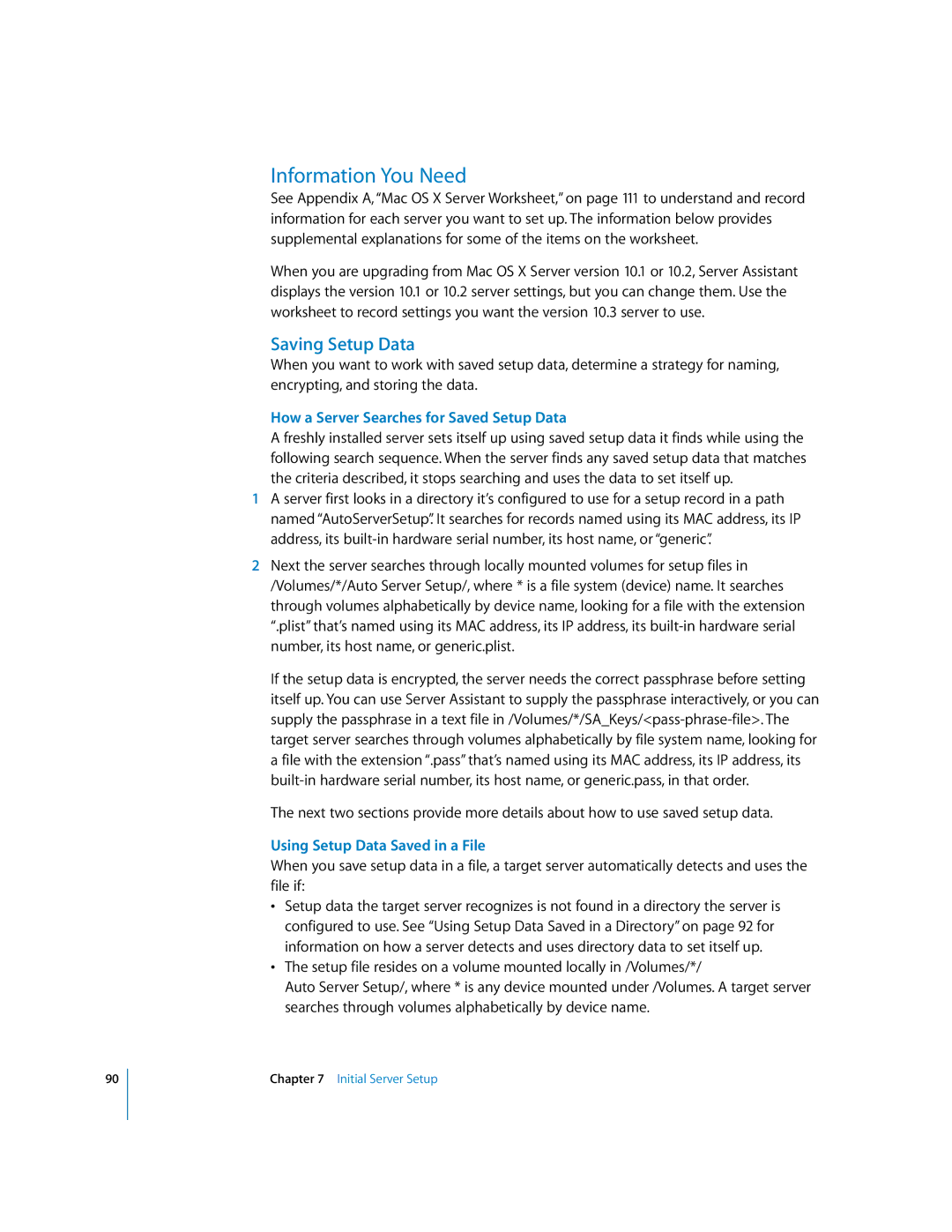
90
Information You Need
See Appendix A, “Mac OS X Server Worksheet,” on page 111 to understand and record information for each server you want to set up. The information below provides supplemental explanations for some of the items on the worksheet.
When you are upgrading from Mac OS X Server version 10.1 or 10.2, Server Assistant displays the version 10.1 or 10.2 server settings, but you can change them. Use the worksheet to record settings you want the version 10.3 server to use.
Saving Setup Data
When you want to work with saved setup data, determine a strategy for naming, encrypting, and storing the data.
How a Server Searches for Saved Setup Data
A freshly installed server sets itself up using saved setup data it finds while using the following search sequence. When the server finds any saved setup data that matches the criteria described, it stops searching and uses the data to set itself up.
1A server first looks in a directory it’s configured to use for a setup record in a path named “AutoServerSetup”. It searches for records named using its MAC address, its IP address, its
2Next the server searches through locally mounted volumes for setup files in /Volumes/*/Auto Server Setup/, where * is a file system (device) name. It searches through volumes alphabetically by device name, looking for a file with the extension “.plist” that’s named using its MAC address, its IP address, its
If the setup data is encrypted, the server needs the correct passphrase before setting itself up. You can use Server Assistant to supply the passphrase interactively, or you can supply the passphrase in a text file
The next two sections provide more details about how to use saved setup data.
Using Setup Data Saved in a File
When you save setup data in a file, a target server automatically detects and uses the file if:
•Setup data the target server recognizes is not found in a directory the server is configured to use. See “Using Setup Data Saved in a Directory” on page 92 for information on how a server detects and uses directory data to set itself up.
•The setup file resides on a volume mounted locally in /Volumes/*/
Auto Server Setup/, where * is any device mounted under /Volumes. A target server searches through volumes alphabetically by device name.
Chapter 7 Initial Server Setup
